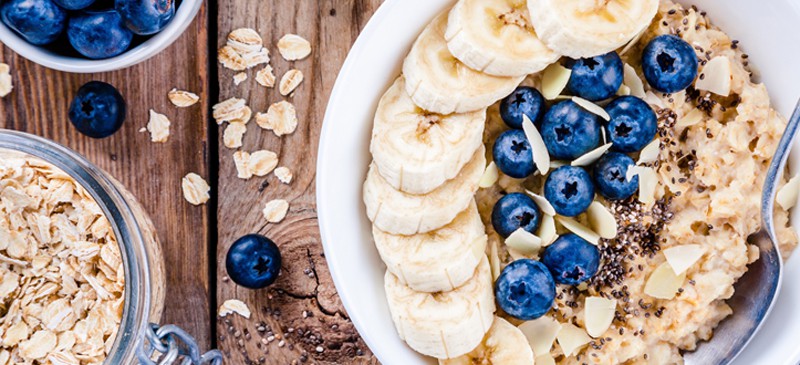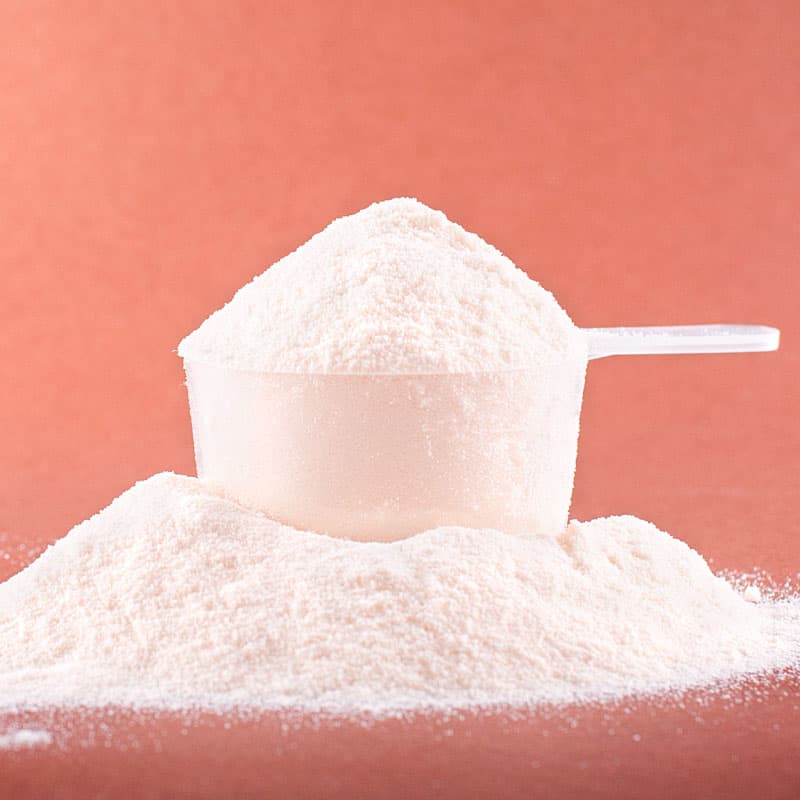This Dr. Axe content is medically reviewed or fact checked to ensure factually accurate information.
With strict editorial sourcing guidelines, we only link to academic research institutions, reputable media sites and, when research is available, medically peer-reviewed studies. Note that the numbers in parentheses (1, 2, etc.) are clickable links to these studies.
The information in our articles is NOT intended to replace a one-on-one relationship with a qualified health care professional and is not intended as medical advice.
This article is based on scientific evidence, written by experts and fact checked by our trained editorial staff. Note that the numbers in parentheses (1, 2, etc.) are clickable links to medically peer-reviewed studies.
Our team includes licensed nutritionists and dietitians, certified health education specialists, as well as certified strength and conditioning specialists, personal trainers and corrective exercise specialists. Our team aims to be not only thorough with its research, but also objective and unbiased.
The information in our articles is NOT intended to replace a one-on-one relationship with a qualified health care professional and is not intended as medical advice.
Oatmeal Nutrition: 6 Amazing Benefits & How to Make It
November 15, 2019

Right alongside bagels, eggs and cereal, oatmeal is one of the most popular breakfast foods on the planet. In addition to packing an impressive punch of oatmeal nutrition into each serving, it has also been linked to increased weight loss, reduced cholesterol levels, better blood sugar control and more.
Not only that, but oats are gluten-free and a highly versatile ingredient that can be prepared, used and enjoyed in a variety of different ways.
So is oatmeal good for you, or are the health benefits little more than hype? This article will take a closer look at the potential oatmeal benefits and disadvantages, along with some easy ways to include it in your diet.
What Is Oatmeal? (Types/Varieties and History)
Oatmeal is a common ingredient made from oat groats that have been either ground, cut or rolled to improve the texture and reduce the cooking time.
Some of the most common types of oatmeal include:
- Steel-cut oatmeal: This type of oat is the least processed, meaning that it retains more fiber than other varieties.
- Rolled oats: Also known as quick, old-fashioned or instant oatmeal, rolled oats cook much more quickly than steel-cut oats.
- Ground oats: These oats have been ground up to form oat flour, which can be added to baked goods and desserts.
Oat groats can also be consumed, but they need to be soaked overnight to help soften them up. Compared to other types of oats, the oat groats nutrition profile is even more concentrated as it contains all three parts of the grain, including germ, endosperm and oat bran nutrition.
In the U.S., oatmeal is usually served as a porridge cooked with water, milk or cream. Other ingredients are also often added, such as sugar, honey, nuts, seeds, peanut butter, cinnamon or fruit.
Oats are also considered a breakfast staple in Scotland because they are well-suited for the unique growing conditions of the country. In Scotland, oats are typically ground up and used to make gruel, porridge, black pudding, haggis or oatcakes.
In Nordic regions like Finland, Denmark and Iceland, oats are also commonly consumed as either a salty or sweet type of porridge.
Across the world, oat milk has become one of the most popular plant-based milks.
Benefits
1. Reduces Cholesterol
Thanks to the presence of a specific type of fiber known as beta-glucan, oats may help reduce cholesterol levels by promoting the excretion of cholesterol-rich bile out of the body.
One large review of 28 trials found that adding at least three grams of beta-glucan to the diet was effective at reducing levels of both total and bad LDL cholesterol without affecting beneficial HDL cholesterol. Other research shows that beta-glucan could also help decrease systolic and diastolic blood pressure, both of which are major risk factors for heart disease.
2. Supports Weight Loss
Thanks to their status as a high-fiber food and the low amount of oatmeal calories found in each serving, many studies show that regular consumption of oats benefits weight loss.
For example, a 2016 study published in Nutrients found that consuming 50–100 grams of oats daily led to significant weight loss in participants with type 2 diabetes over a one-year period. Similarly, another study showed that eating oatmeal helped promote feelings of fullness and reduced hunger, appetite and food intake to a greater extent than a ready-to-eat breakfast cereal.
3. Stabilizes Blood Sugar Levels
With four grams of fiber in each one-cup serving, adding oatmeal to your diet can help keep blood sugar levels steady to prevent spikes and crashes after meals. Fiber helps slow the absorption of sugar in the body to maintain normal blood sugar levels and deliver a steady stream of fuel to the cells.
A number of studies have found a link between increased oat consumption and better blood sugar control. For instance, a 2015 review of 16 studies reported that oats were effective at reducing fasting blood sugar as well as levels of hemoglobin A1C, a marker used to measure long-term blood sugar control. Other research suggests that oats may also help enhance insulin sensitivity, improving your body’s ability to use this important hormone to stabilize blood sugar levels.
4. Rich in Antioxidants
In addition to supplying a wide variety of important vitamins and minerals, the oatmeal nutrition profile also boasts a good amount of antioxidants in each serving as well. In particular, oats are a great source of avenanthramides, which are a type of polyphenol that act as antioxidants in the body.
Antioxidants are compounds that help neutralize harmful free radicals to protect against oxidative cell damage and disease. In fact, studies show that antioxidants may aid in the prevention of many chronic conditions, including heart disease, cancer and diabetes.
5. Promotes Regularity
Oats are rich in fiber, which plays a central role in digestive health. Fiber moves through the gastrointestinal tract undigested, adding bulk to the stool to prevent constipation and support regularity.
According to a 2012 review published in World Journal of Gastroenterology, increasing fiber intake can be an effective strategy to increase stool frequency in those with constipation.
Fiber may protect against other digestive issues as well, and research suggests that it could also be beneficial against conditions like hemorrhoids, diverticulitis, stomach ulcers and acid reflux.
6. Relieves Skin Problems
Taking an oatmeal bath is a common natural remedy used to soothe itchy or irritated skin. Recently, oat-based skin products have also started popping up all over the market, thanks to their ability to relieve inflammation and treat conditions like eczema and atopic dermatitis.
Colloidal oat extract, in particular, is an ingredient produced by grinding oats into a fine powder and then processing them to extract the colloidal material. Studies show that colloidal oatmeal can help reduce markers of inflammation and improve skin health by decreasing symptoms like scaliness, itching, roughness and dryness.
Nutrition Facts
Take one look at the oatmeal nutrition data and it’s easy to see why these power-packed whole grains are so stellar for your health. Not only does each serving contain a low amount of oatmeal calories, but oats are also a great source of fiber, antioxidants and micronutrients like manganese, selenium and phosphorus.
A one-cup serving (about 234 grams) of cooked oatmeal nutrition contains approximately:
- 166 calories
- 32 grams carbohydrates
- 6 grams protein
- 3.5 grams fat
- 4 grams dietary fiber
- 1.4 milligrams manganese (68 percent DV)
- 12.6 micrograms selenium (18 percent DV)
- 180 milligrams phosphorus (18 percent DV)
- 63.2 milligrams magnesium (16 percent DV)
- 2.3 milligrams zinc (16 percent DV)
- 2.1 milligrams iron (12 percent DV)
- 0.2 milligrams thiamine (12 percent DV)
- 0.2 milligrams copper (9 percent DV)
- 0.7 milligrams pantothenic acid (7 percent DV)
- 164 milligrams potassium (5 percent DV)
In addition to the nutrients listed above, the oatmeal nutrition also contain a small amount of folate, niacin, calcium and riboflavin as well.
How to Make It (Recipes)
There are plenty of options for how to enjoy this healthy whole grain.
The most common way to prepare oatmeal is to heat water or milk in the microwave or on the stove before combining with oats. Most recommend using a 2:1 ratio of liquid to oats, but you can easily adjust this based on your personal taste and preferences.
Once your oatmeal is cooked, you can start topping it off with your choice of fruits, nut butters, herbs, spices and seasonings to ramp up the flavor and add a hint of sweetness.
Need some more inspiration? Whether you’re looking for a creative yet healthy oatmeal recipe or detailed instructions for how to make oatmeal on the stove, there are tons of oatmeal recipe ideas out there to help get you started.
Here are a few interesting oatmeal recipes that you can try at home:
- Overnight Oatmeal
- Vanilla Spice Oatmeal
- Apple Cinnamon Baked Oatmeal
- Basic Oatmeal Recipe
- Pumpkin Pie Oatmeal
Risk and Side Effects
Despite the many benefits of oatmeal nutrition, there a few downsides to consider as well.
First of all, it’s important to keep in mind that not all oats are created equal. In fact, highly processed oat-based products with added flavors and sweeteners may not boast the same health benefits as regular oats.
Ideally, select regular oats whenever possible and try adding fruit, cinnamon, raw honey or maple syrup to bump up the flavor and potential health benefits.
Many people also wonder: Is oatmeal gluten-free? While oats are naturally gluten-free, many oat-based products are produced in facilities where wheat, barley and rye are also processed, which can increase the risk of cross-contamination.
Therefore, if you have celiac disease or a sensitivity to gluten, it’s important to select oats that are certified gluten-free whenever possible.
Finally, note that increasing your intake of fiber-rich foods too quickly can cause digestive issues like bloating, gas and constipation. There are nearly 11 grams of fiber in the uncooked oats nutrition profile per 100 grams, and each one-cup serving of cooked oats contains around four grams.
For this reason, it’s best to increase your intake gradually and be sure to drink plenty of water to help keep things moving through the digestive tract.
Conclusion
- Oatmeal is a common ingredient made from oats that have been rolled, ground or cut to improve the texture and speed up the cooking time.
- The oatmeal nutrition profile boasts a good amount of protein and fiber, plus antioxidants and important micronutrients like manganese and selenium.
- Some of the potential benefits of oatmeal nutrition include increased weight loss, reduced cholesterol levels and better blood sugar control. Research also shows that oatmeal benefits skin health and digestion as well.
- Is oatmeal gluten-free? Although oats are naturally gluten-free, many types are processed in facilities where gluten-containing ingredients are produced as well, which can increase the risk of cross-contamination.
- Furthermore, keep in mind that highly processed forms of oatmeal are often pumped full of additives, flavorings and artificial sweeteners and may not carry the same health benefits as regular oats.
- There are tons of oatmeal recipes out there, along with detailed instructions on how to make oatmeal with milk, water or other ingredients as well.
- With so many options for how to customize this classic breakfast staple, oatmeal can be a versatile, nutritious and delicious addition to just about any diet.











